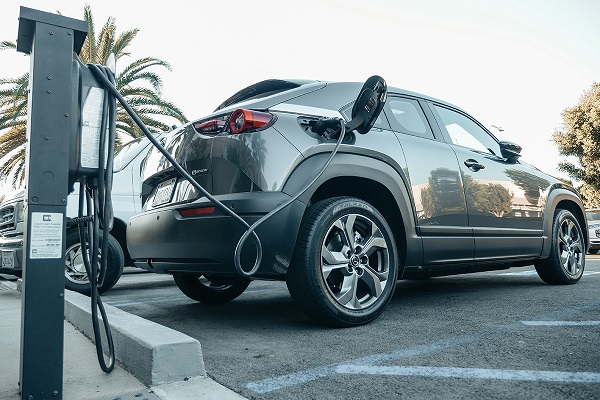EarthTalk®
From the Editors of E – The Environmental Magazine

Can the U.S. come back from its position as a laggard on production of electric vehicles as Chinese and European automakers blaze ahead? Credit: Pexels.com.
Dear EarthTalk: Why is the U.S. lagging behind Europe and China on the production and sales of electric cars? – James V., Miami, FL
The U.S. lags as a distant third among electric vehicle (EV) sales and production. According to Bloomberg, China claims a whopping 46 percent of global EV sales. Europe comes in second at 34 percent, while North America accounts for only 15 percent. The U.S. EV fleet continues to expand, growing 28 percent annually from 2015-2020, writes The Guardian. But that same period saw the European fleet increase 41 percent while China’s fleet grew 51 percent.
Production rates show similar trends. The International Council on Clean Transportation (ICCT) establishes China as the market leader, accounting for 44 percent of EV production as of 2020. Europe again claims second place, with 25 percent market share. And the U.S.?: 18 percent of global production, a decrease from 20 percent in 2017.
Policy is the primary hold-up behind the U.S. lag. Both China and the European Union boast supply and demand policies to stimulate EV markets, such as greenhouse gas reductions, quota systems for new vehicle sales, and consumer incentives to reduce purchase price.
“Electric vehicle manufacturing growth happens where there are strong national policies designed to spur the market forward,” says Nic Lutsey of ICCT. “Hundreds of billions of dollars are on the table, and the United States hasn’t even bothered to pull up a chair.”
During the Trump administration, the U.S. rolled EV policies back. The Environmental Protection Agency under President Biden released new greenhouse gas vehicle standards in December 2021, but some argue the revisions merely reinstated Obama-era policies rather than advance the field.
Charging infrastructure is another missing link; electric charging stations are still scarce on the American landscape. In daily spins around the city, this dearth may not present a problem, but for long-distance trips, “range anxiety” can be enough to slow sales.
As Alyssa Altman of Publicis Sapient told Wired, “Historically there simply haven’t been enough charge points. Potential EV customers are concerned with keeping their vehicle juiced up for long trips, and for some journeys in the U.S., the lack of charging stations makes this impossible.”
Statista counts 113,600 charging outlets in the U.S., compared to China’s 800,000, with 36 percent in California, thanks to its profusion of EVs and supporting state policies.
Some bright spots are emerging for the U.S. EV market. President Biden is aiming for 50 percent of new car sales to be electric by 2030, although 20 percent may be more realistic. Congress passed a bill for 500,000 new charge outlets nationwide, but the death of the Build Back Better bill interrupted plans for expanding consumer incentives.
Also, car manufactures are beginning to step up. GM, Volvo and Audi have announced intentions to go fully electric in 10-15 years. And, although the number of EV-ready manufacturing plants still lags behind traditional plants, that number is rising, says ICCT, with seven of 44 manufacturing plants scheduled to be all-electric by 2025. U.S. Department of Energy research shows that, even with higher price tags, less maintenance on EVs decreases lifetime costs compared to traditional cars.
The more consumers consider electric, the more the U.S. market grows.
CONTACTS:
How to Decide If A Hybrid, Plug-In Hybrid, or Fully Electric Car Is Right for You, consumerreports.org/hybrids-evs/how-to-decide-if-a-hybrid-plug-in-hybrid-or-fully-electric-car-is-right-for-you/;
International Energy Agency, iea.org/reports/electricity-market-report-january-2022; ICCT, theicct.org/publication/power-play-evaluating-the-u-s-position-in-the-global-electric-vehicle-transition.
EarthTalk® is produced by Roddy Scheer & Doug Moss for the 501(c)3 nonprofit EarthTalk.
See more at https://emagazine.com
To donate, visit https//earthtalk.org
Send questions to: question@earthtalk.org
